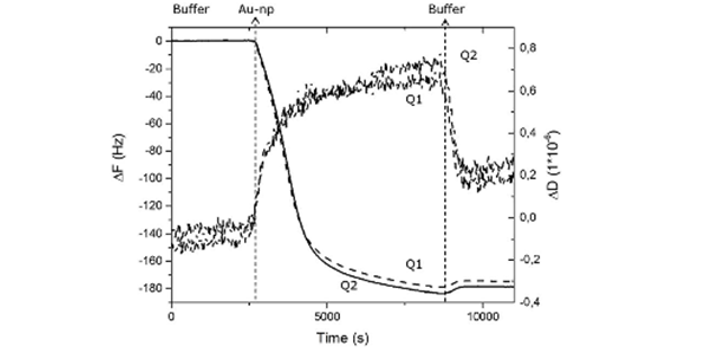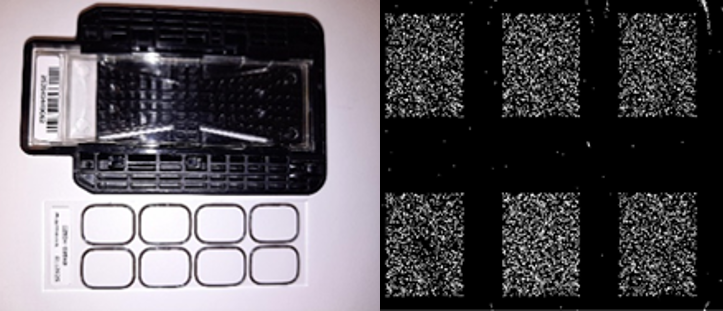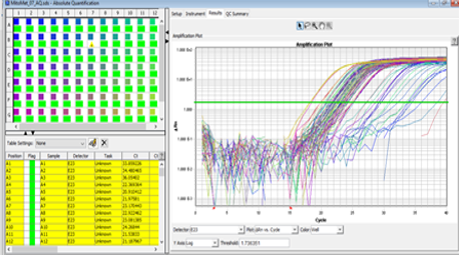Biomolecules and biomaterials analysis
OM Optical Manipulation
Optical tweezers use radiation pressure of a laser focused by an optical microscope to handle micro-objects and to apply pN forces and can be joined with optical spectro-microscopies. At present we offer multiple trapping, manipulation, force measurements, laser microsurgery, Raman spectroscopy, phase contrast imaging, TIRF and FRET are operative.
QCMB Quartz crystal microbalance biosensor(Biomolecular real-time detection)
QCM-D is a real-time surface sensitive technology that detect mass changes at the sensor surface with nanoscale resolution. In practice, this instrument is a balance for very small masses and the molecule-surface interactions are detected as changes in mass. In addition to the changes in mass QCM-D also captures changes in energy loss.
SPRB Surface Plasmon Resonance Biosensor (Biomolecular real-time detection)
Surface plasmon resonance instruments enable to measure in real time the biomolecules binding onto the sensing surface by monitoring the induced plasmonic resonance peak shift at the gold-liquid interface. This technique allows real-time detection and monitoring of biomolecular binding events.
CD Circular dichroism (protein structure analysis)
Circular dichroism (CD) is a spectroscopic technique that allows the rapid determination of the secondary structure and folding properties of purified proteins. The most widely used applications of protein CD are to determine whether an expressed, purified protein is folded and its thermal stability.
Elisa-PR Elisa (enzyme-linked immunosorbent assay) plate reader / Multimode plate reader
The instrument uses the Luminex technology based on magnetic beads for multiplex immunoassays.
DNAMS DNA Microarray scanner (Absorbance Fluorescence Luminescence)
The microarray scanner is a laser-induced fluorescence scanner designed to read microarrays printed on standard 1 in × 3 in slides. The microarray scanner measures the fluorescence intensity of labelled sample nucleic acid (DNA and RNA) bound to microarrays.
RT PCR Real time Polymerase chain reaction (RT PCR)
Real-time PCR (also called quantitative PCR - qPCR), combines PCR amplification and detection into a single step. This eliminates the need to detect products using gel electrophoresis, and it enables the method to be truly quantitative. With real-time PCR, fluorescent dyes are used to label PCR products during thermal cycling.








